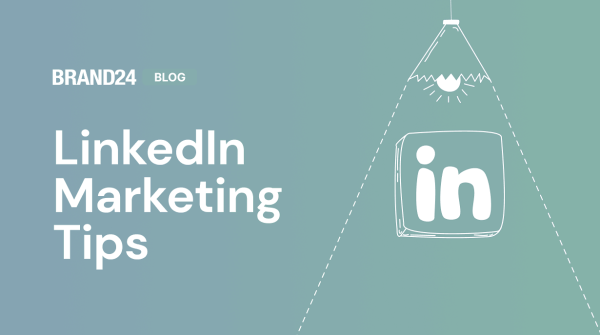What is Social Selling? Guide To Generate Better Leads
Table of contents
According to LinkedIn statistics, 78% of social sellers outperform peers who don’t use social media platforms. You see? You need social selling techniques to sell better and more. Whether you are a salesman, business owner, or marketer, read this article to discover new sales opportunities. Tools and techniques included.

It’s no secret that we make more digital purchases than ever before, from 1.3 billion buyers in 2014 to 2.1 billion in 2021. And that number is constantly rising.
That’s why every professional brand uses social platforms and social selling tools to stay on top.
Is this still all Greek to you? Don’t worry. You’ll learn everything from this article.
Read further to master your social selling skills and build a professional brand with a solid social media presence.
Table of contents:
- What is social selling?
- Social selling for B2B vs B2C
- What are the benefits of social selling?
- How can I start social selling?
- Social selling & Brand24
- Social selling best practices
- Does social selling affect sales?
- How does social selling work across different channels?
- The challenges of social selling
- Start social selling today!
Warning: Do not confuse social selling with social marketing.
What is social selling?
It’s a sales strategy involving social media. Simple as that.
But that might also be true for social media marketing.
So, what makes social selling distinct from social media marketing?
Social selling is personal and targeted communication with potential customers. Social sellers build relationships with their customer groups by interacting on social media platforms.
If you do it correctly, you can easily create authentic relationships and effectively generate leads.
What social selling is not?
Remember, social selling is not about endlessly harassing potential clients with private messages or comments under their posts. Your actions should be well-balanced not to appear pushy or spammy.

To build relationships with potential customers, your interactions must be meaningful and authentic.
Your sales success is near! Strat media monitoring with Brand24 and sell through social media.
What is the difference between social selling and social media marketing?
While both occur in social media, social selling is a more personalized communication focusing on one individual or a tiny group.
Social media marketing, on the other hand, aims at reaching as many people as possible. Consequently, it’s less personal and puts less attention on an individual’s needs.
Social selling for B2B vs B2C
Is social selling only for B2B or also for B2C?
Social selling is mainly used for business-to-business companies. However, recently, we’ve been observing a rise in B2C social selling successful attempts.
This sales process requires an active search for potential customers and interacting with them. Maintaining relationships is vital for social selling success.
Ok, do you want examples?
If somebody on LinkedIn is asking for the best tool for social listening, sales teams from such solutions should quickly reply with their options.
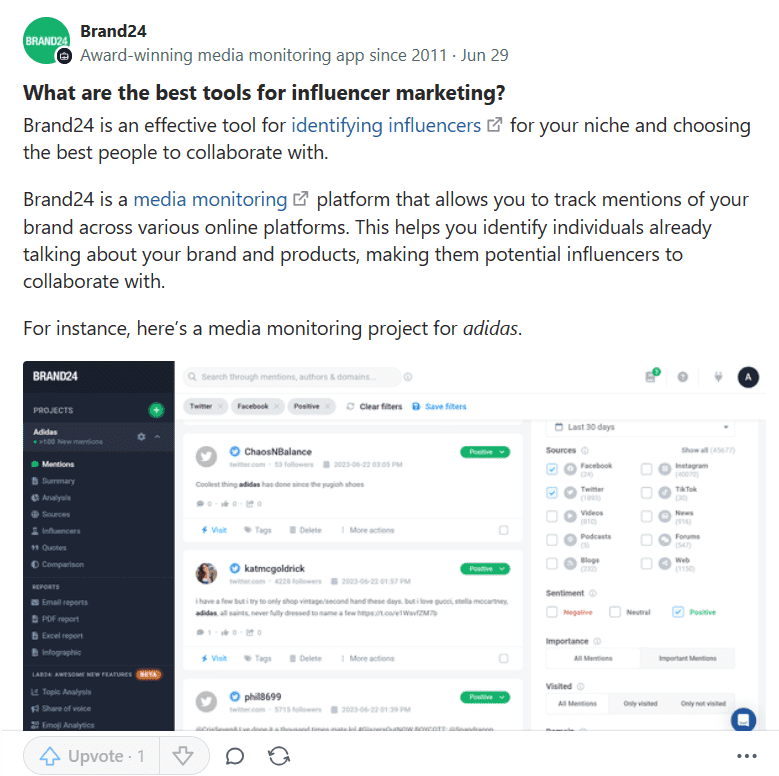
But don’t treat it as an advertisement – simply writing “check out XXX” won’t work. You need to be more specific, more relatable, and more human.
Instead of a bland mention of your brand, try to engage in online conversations with potential customers. Ask them what their pain points are, what’s the size of their organization, and if they need a dedicated account manager. Then, share some relevant content from your blog, a similar case study, or one of your other relevant forums.
Sharing success stories and relevant content is one of the fundamental steps in finding paying customers.
By the way, would you like to try our social listening tool? The 14-day trial is free, and no credit card is required.
Business to business
For B2B sales, the primary objective revolves around generating leads by educating prospects on the value proposition. It’s essential to nurture relationships, creating mutual connections. That’s an effective way to boost a brand’s digital presence. Plus, metrics like the generation of leads and relationship-building are paramount.
LinkedIn, Twitter, or Quora are the right places for you to start, as they cater to professional and industry-specific content.
Content typically takes the form of case studies and webinars. Another valuable content type is a blog post. No matter the format, it usually focuses on being informative and authoritative. It often includes social proof to encourage customers who still hesitate.
Establishing trust and credibility through leadership and offering solutions is key.
Business to customer
On the other hand, B2C sales aim to heighten brand awareness, drive traffic, and stimulate purchases. Metrics shift toward assessing awareness, clicks, conversions, and revenue.
Visually engaging platforms like Instagram, Facebook, or TikTok gain significance. Content takes a more amusing and emotional approach, encompassing videos, stories, and user-generated content.
Building trust in B2C hinges on showcasing personality and authenticity and connecting with customers on a human level. Creating a sense of community and loyalty and offering incentives and rewards are essential for nurturing prospects.

Both B2B and B2C need to respond actively to comments, questions, and feedback, utilizing social listening tools to gauge the pulse of the audience and address issues promptly. The ultimate goal in both B2B and B2C remains conversion, retention, and post-sale engagement.
What are the benefits of social selling?
Social selling, when executed effectively, offers a multitude of benefits.
It allows businesses to build meaningful relationships with their target audience, fostering trust and credibility. Through personalized interactions, it can lead to higher conversion rates, as prospects are engaged and more likely to make a purchase.
Social selling also provides valuable insights into customer behavior, helping companies tailor their offerings to meet specific needs.
Additionally, it enhances brand visibility and awareness, extending reach and creating a more significant impact in the digital marketplace.
Boost your social media presence and discover your brand’s pain points with Brand24.
How can I start social selling?
The easiest place to start social selling is LinkedIn. Most sales reps use this medium anyway, so you probably have a profile already.
To become a master in building relationships and generating leads, your LinkedIn profile should be spotless. That means you should put your heart into filling all the necessary fields.
This doesn’t mean you have to list all the jobs you had since you started earning money, but rather describe your responsibilities in the most recent and relevant companies. Don’t oversleep on the intro and about sections. That’s a place where you can truly sell yourself.
After you complete your social profiles, check out one of the recommended social selling tools. I highly advise using a social listening tool like Brand24 to gather all useful mentions and keywords.
Once you hook up on relevant content, start a casual conversation about the potential customer’s business challenges and your solutions.
More on social selling on LinkedIn below.
Social selling & Brand24
Brand24 is a social listening and media monitoring tool appreciated by marketers worldwide. We collect live brand mentions and deliver them to you in a neat and organized format.
So, how exactly is Brand24 helpful while executing a social selling strategy?
First of all, you will learn what people are talking about your brand and niche. That is a key step to understanding your target audience. Successful lead generation via social media includes using the same language as potential customers. That’s also how you organize a social network with them.
This is where sales professionals can benefit from Brand24.
Set up a project including keywords around your niche or product and see how the target audience communicates.
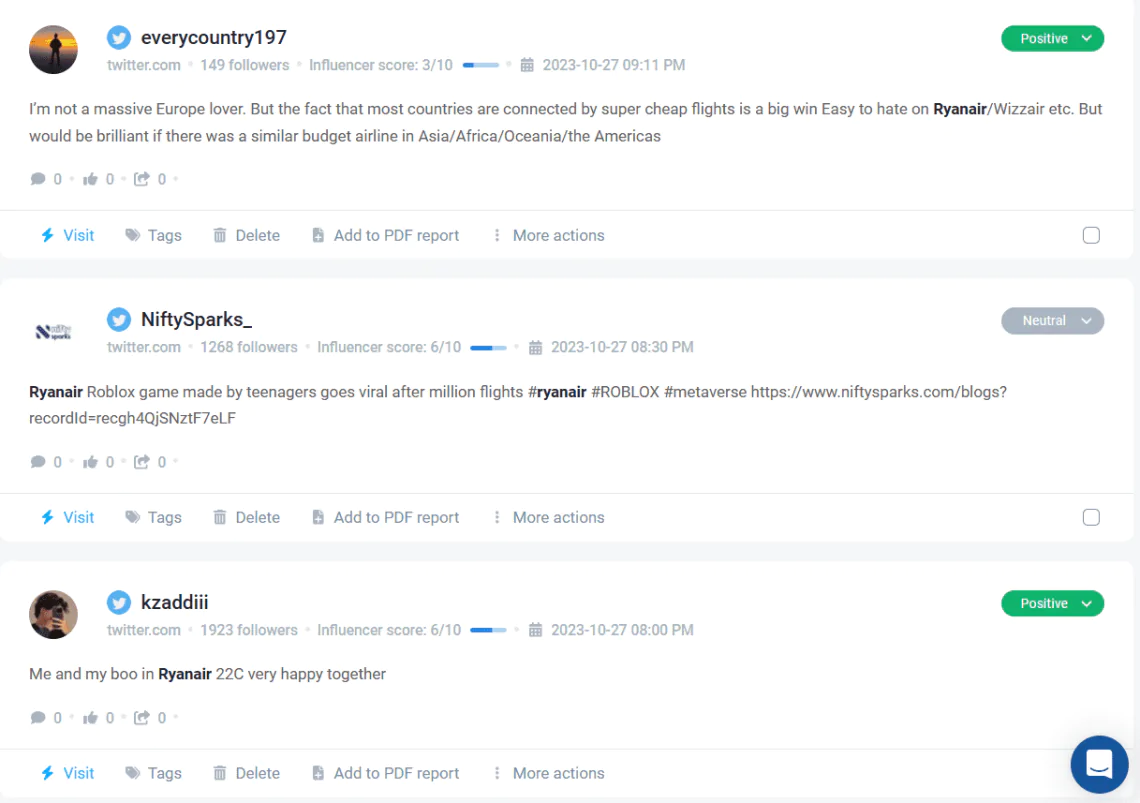
In Brand24, you can additionally analyze the sentiment – filter through positive or negative mentions to discover what people think about your brand. That’s also how you prevent a PR crisis – by monitoring the sentiment and reacting to sudden changes!
Moreover, Brand24 notifies you about new mentions in real-time. So when somebody is talking about your brand (or product), you can quickly react and respond.
Read more: How to social sell with Brand24?
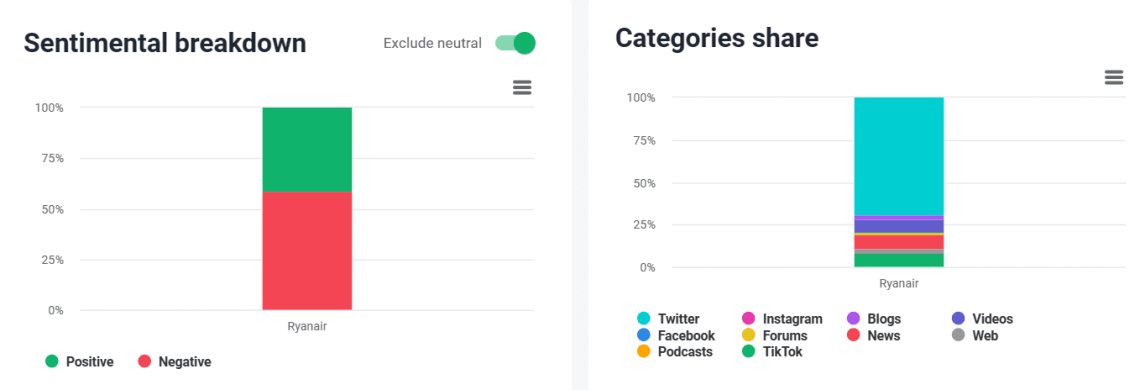
Boost your social selling strategy with Brand24 – a media monitoring tool. 14-day free trial and no credit card required.
Social selling best practices
For social selling best tips and practices, check out our YouTube video!
Does social selling affect sales?
The main question is, does social selling actually work? Well, according to various studies – yes, it does!
LinkedIn stats show, social media sales leaders are 51% more likely to reach quota.
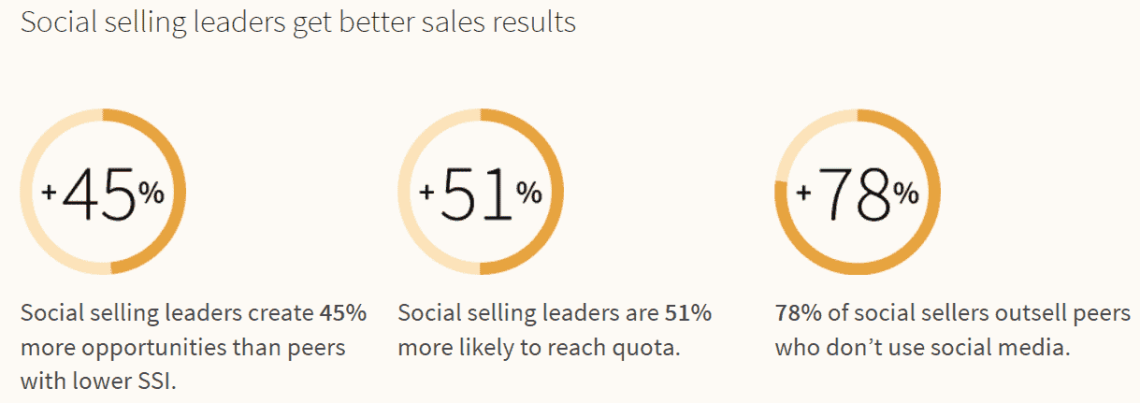
By building genuine relationships with potential customers, they are more likely to bond with the brand and become recurring buyers. They are also likely to switch from a competitor to your solution.
Of course, a social selling strategy requires a lot of commitment and social skills, but the reward waiting for you is definitely worth the effort.
Decision-makers in companies like to feel cared for. When choosing between two solutions with a similar offer, they are likelier to switch to the one where they were introduced or connected to a key account manager or other sales team members. That’s because they hope that they will receive help if they encounter any difficulties.
How does social selling work across different channels?
The most popular social media platform for a social selling program is LinkedIn. Still, there’s no rule against performing the sales tactic on Twitter or Facebook and finding potential buyers via other channels.
Social media networks work differently, so you must tailor your social sales strategy to each channel.
Let’s break down popular social platforms and how they can contribute to your social selling success by creating an effective sales funnel and optimizing your sales pipeline.
Social selling on Facebook might not be as effective as on LinkedIn or Twitter because most users hide behind personal profiles and interact only with their closest friends. So unless you know someone, it won’t be easy to perform any sales strategy.

That being said, it’s good to monitor brands and fanpages in your niche with tools like Brand24 and see if someone is looking for a product you can offer. You can always respond to comments as a brand or a personal profile and start the buying process there.
Twitter is easier because most tweets are public. And much easier with a social listening tool like Brand24.

Simply start a project for your desired keywords, start monitoring Twitter for any mentions that might be relevant to your brand, and engage with the users. Sooner or later, you will master the strategy and will be able to generate a lot of leads.
There are better places to start social selling than user-generated content on Instagram. Nevertheless, you can try this channel, too. This social medium focuses on photos, and the comment section is often omitted, but consistent efforts should bring you a starting point for social selling tactics.


Monitor social media with the best media monitoring tool! Check what potential customers think about your brand.
It is the best place for B2B social selling. LinkedIn provides useful tools like Social Selling Index and Social Sales Navigator to monitor your campaigns.
Many C-suite executives use this social selling platform daily, and they are usually your target for B2B sales. There are a lot of great tutorials on LinkedIn marketing out there that will help your sales.
Here are just a few principles you should follow:
- Be genuine.
- Engage in relevant conversations.
- Stay up to date with the latest trends.
Use that to improve your sales funnel.
Example: Tomasz Niezgoda from SurferSEO wrote a LinkedIn post about a digital course for SEO writing. The post had a broad reach and generated more than 40 comments, with people asking for an invitation to the class. This is an excellent way of promoting your brand with personal branding through a social selling platform.
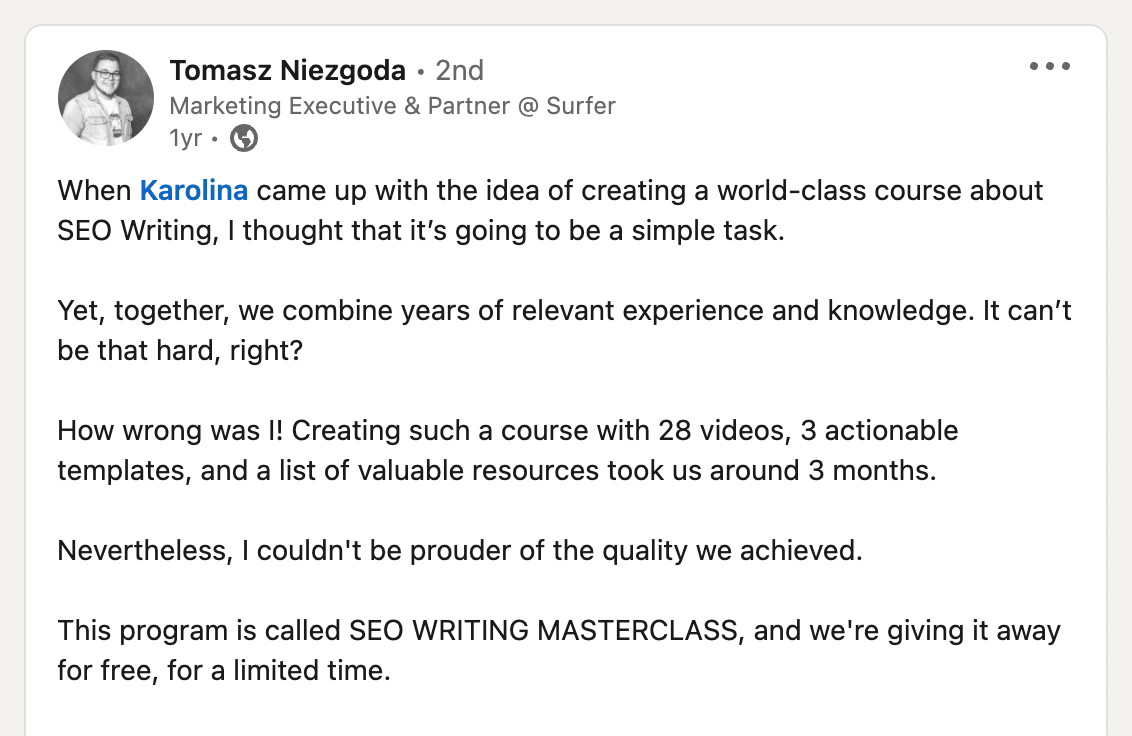
According to Tomasz, more than 20,000 people joined the SEO Writing Masterclass. Mainly promoted on LinkedIn. Let’s take a closer look at this social selling platform.
LinkedIn Sales Navigator
If you are a sales rep, you probably already use LinkedIn heavily. So, why not try the native tools the social media channel provides?
LinkedIn Sales Navigator is helpful in outreach and lead generation within your target audience and a great tool to build relationships with potential clients.
How to improve the Social Selling Index on LinkedIn?
Social Selling Index is a measurement tool by LinkedIn to estimate your social selling efforts. You can get your score for free here.
Social Selling Index shows in percentage the completeness of your LinkedIn profile needed for successful social selling. It compares it to similar people in your industry, so you can learn if you are above average or should improve.
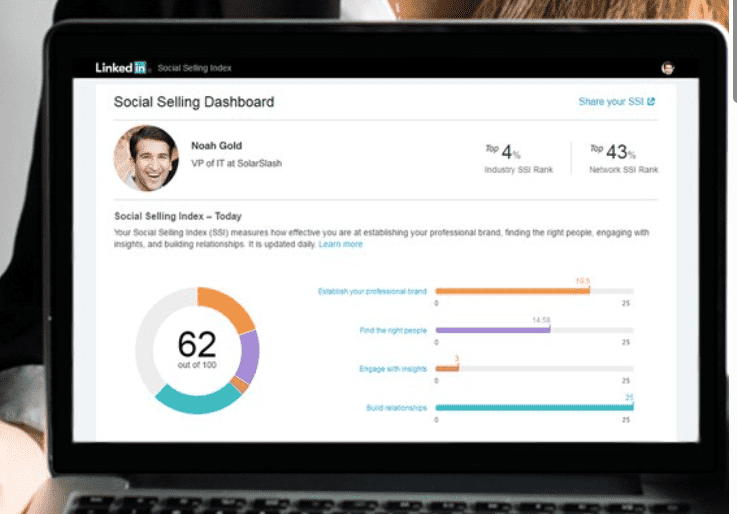
How to improve the SSI? Well, if you click the link and calculate your score, you know exactly what to do.
- Establish your professional brand – think like your potential customer. What do they want to see when visiting your LinkedIn profile? Tell the visitors who you are, your specialty, and why they should trust you.
- Find the right people – LinkedIn provides suggestions for new connections. Expand your professional network by connecting with industry and sales leaders, former clients, business partners, existing customers, and LinkedIn groups. Your network will grow, and your social presence will, too!
- Engage with insights – believe it or not, but you are thoroughly profiled on each social media. That means LinkedIn will find relevant groups and great conversations for you to join if you let it. Follow relevant hashtags, brands, and people, and start engaging daily. It’s a great way to find new professional relationships.
- Built relationships – use LinkedIn to talk with your existing customers, but also engage in new conversations with your network. Learn new relationship-building techniques, and you will become a master in social selling. Don’t forget to join LinkedIn groups valid in your niche.
Boost your social selling strategy with Brand24 – media monitoring tool. 14-day free trial and no credit card required.
The challenges of social selling
Introducing social selling in your sales process is not difficult, but it’s challenging to do it right.
Social media is all about fighting for the short attention span of other users, and people tend to be like a goldfish in this case. After many years of being exposed to digital ads, we do not want to read any more sales pitches. Fortunately for you, LinkedIn users expect to see a lot of social sellers.
Social selling is sometimes confused with social marketing, but these two should be kept separate. While social media marketing usually aims at a broader group of people, the business challenge of social selling is to cultivate one-on-one relationships. If you don’t like talking with others, you will have a hard time with social media sales.
While adopting social selling, many sales reps engage in long-term relationships with potential buyers. You must sell yourself to engage with a prospective customer and maintain a genuine conversation. You should befriend the prospect first, then proceed to a sales pitch.
Of course, most social media users will detect a fake interest almost right away. That’s why I’m putting a strong emphasis on genuineness.
Social selling works with meaningful relationships. Don’t spam LinkedIn with connection requests only to send them all the same few words about how your business will change their lives. Nobody buys that anymore.
Start social selling today!
Stop cold calling. By now, you should know enough to build your personal brand and start social selling successfully.
Additionally, read our top social selling tips to become an even better salesperson.
We hope this article explains the issue. Our tool will help you reach sales goals faster with new business leads gained with social selling.
There are 3 main takeaways:
- Focus on meaningful relations through your social media account
- Provide valuable content
- Start your free Brand24 trial and discover who is talking about your company.
Test a great social selling tool – Brand24 – for free for 14 days.

